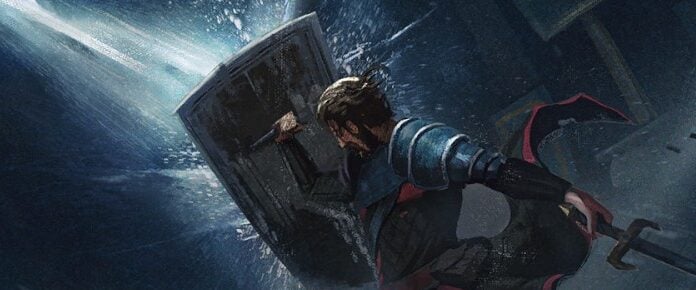
I don’t know about you lot, but I really enjoy ArenaNet‘s Points of Interest livestream that airs on its official Twitch channel. It contains a massive amount of juicy information that often rewards its eager audience with crisply presented details, outstripping that found in the quick news posts on any given topic. Needless to say, it’s almost always worth my while tuning in. Last Friday’s livestream was particularly interesting, however, in that Game Director Colin Johanson hinted that in Heart of Thorns challenging group combat requires the uptake of more traditional tank, DPS, and healer roles.
The traditional MMO holy trinity isn’t something that springs to mind when I think about my beloved Guild Wars 2, so I felt the need to rewatch this section of the stream repeatedly to really get to the heart of Johanson’s message. In this edition of Flameseeker Chronicles, I’ll attempt to disassemble what was said, discuss Johanson’s later written clarification, and attempt to figure out what this might mean for the upcoming expansion. This is going to be a bumpy ride for sure, so buckle up and stick with me!
Before I launch right in here, I have to point out how welcome it was to hear a developer talk about how beta testing should be used and how a true beta test requires plenty of feedback. This is certainly something I can get behind, and I know that HoT will be a much better product as a direct result of this emphasis on interactive, feedback-led testing. I’d urge you all to get chatty whenever you play any beta content: ANet needs to hear your feedback, and the more constructive you can be, the better our expansion will be.
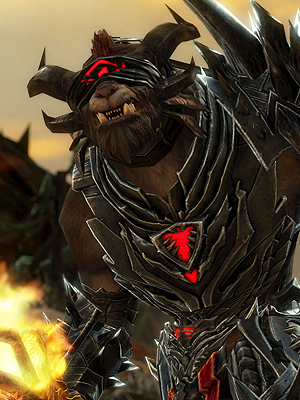 The revenants and GW2‘s version of the trinity
The revenants and GW2‘s version of the trinity
On to the good stuff! Let’s firstly look at what was said during the livestream: Johanson opened up his discussion of the holy trinity’s place in HoT by pointing out that our first glimpse of the Revenants was relatively “tanky,” especially with the slower hammer and original legend combination that was thrown to us for breaking testing. As he argues, though, the tests of Ventari have proved that a supportive healer role is possible within the game’s newly envisioned combat system. Johanson dubs this revenant playstyle the “closest thing to truly just playing straight-up as a healer that you might find in more traditional MMO experiences,” and I can see that from the little time I’ve had to tinker with the profession.
Although I can see how that might work and the revenant profession seems to be developing well, the true validity of the new playstyle has been very problematic to test due to the current lack of challenging group content that throws the player into scenarios in which a dedicated healer might be necessary. We heard Johanson admit that “there are not a lot of super-challenging encounters in Guild Wars 2 right now,” but he was quick to point out that “it’s one of the big things [ANet is] focusing on with this expansion.” We can see already that the current combat system doesn’t synergise well with traditional roles, so does this mean that the game’s entire combat system will end up drastically different in HoT?
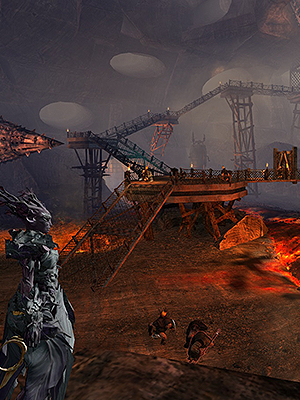 Many questions have been left unanswered
Many questions have been left unanswered
The promise of challenging group content has been on the HoT radar for a long time now, but if you’re expecting clear answers on what that will look like then prepare to be disappointed. Our favourite chronic smiler is still tight-lipped on what that “challenging group content” will be and how exactly it will tie in with the new elite specializations to encourage more traditional role-based strategies. Johanson was very frank about how quiet the studio has been on the topic, but he explained the ramifications briefly from the studio’s perspective, saying, “We haven’t explained what challenging group content means yet, but I can say as we play test it, it’s very important to have things like those abilities.”
I’m expecting that the incoming raid system will have plenty to do with the studio’s version of engaging group content, and now it seems that it may require dedicated tank and healing roles. Johanson claimed, “We never said that we don’t want to have the DPS, the tank, and the healer in the game, and I think that’s a common misconception. We just don’t want people locked into those roles forever.” I can’t blame you for feeling a little bit confused right now because a good proportion of the game’s playerbase see the holy trinity as an archaic and even negative force in MMOs that GW2 had rightfully moved past. The immediate response from fans has been to draw back on how the game’s departure from the trinity was pushed heavily as a unique selling point before its initial release. Has ANet done a crazy 180, or is there more to it?
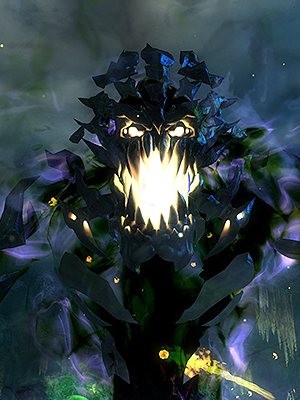 Was GW2 really supposed to abolish the trinity?
Was GW2 really supposed to abolish the trinity?
To put some sort of answer forward, I gave myself a little refresher in the pre-GW2 hype train that proceeded the game’s launch. I found myself thinking about whether we really had misconstrued what was said during the promotion of the base game. Back in 2011, Eurogamer interviewed Johanson about how he thought ANet made MMOs better with GW2, and his answer referenced “taking the holy trinity… and just throwing it out the window” because its application in the genre was tired and uninteresting. How then did he jump from throwing out the traditional combat roles to embracing them?
The answer seems to lie within an old pre-launch article by Game Designer Jon Peters, titled A New Way of Looking at Healing and Death. Peters really breaks down what the thinking behind dispelling the traditional MMO combat mechanics actually was. The article shows that the game didn’t necessarily want to abandon combat roles entirely but instead sought to reimagine combat strategy and prevent players from feeling trapped or labelled by them. Peters explained it quite well, really:
Ultimately, DPS/heal/tank just didn’t cut it in our book…er, game. Our players demand more from Guild Wars 2 and we intend to deliver on that demand instead of delivering more of the same. Not only is the trinity very formulaic, but it leaves out a lot of gameplay elements that make many other games so much fun. Instead, we break these trinity categories down into a cooler, more versatile system.
Rather than entirely breaking away from DPS, tank, and healer configurations, Peters aimed to redefine each role and make each one much more fluid, allowing players to switch up as combat demanded. This has been restated by Johanson on the Guild Wars 2 Reddit as a response to questions arising from his recent appearance on Points of Interest: He sort of revisits the original goals Peters mentioned in that early post and talks about how the inconsistency some players are feeling now was caused by the content failing, not by a change in company ethos:
I think some of my point was either misunderstood or lost here, in particular reading Nikes comments on the youtube section so I’ll try and clarify more simply:
We like the way combat works right now, we really don’t plan to change it much other than add more options with elite specs.
It works the way we intended: you can play control, support, and DPS actively. To folks who prefer to define by the holy trinity, GW2 doesn’t force you to pick one of the three from heal, tank, or DPS and only do that – it blends a mix depending on your build and allows you to actively swap roles or soft play between roles.
Our goal was to remove the forced singular role you’re locked into, people often mistake this as saying GW2 has no trinity elements, that isn’t true – we just don’t believe in a forced role for the reasons I covered in the livestream.
That said the point I really wanted to make in the livestream was the issue with the combat system in PvE isn’t the combat system. It’s that the mobs and encounters we have provided so far very rarely allow/encourage you to make use of the combat system as intended.
There are some exceptions, but one of our goals with HoT is to help allow more room for players to experience the full range of the combat system in PvE. From the common world mobs up to the challenging group content we will talk about later, we are asking our design team to design encounters in PvE more focused on using the system we have built.
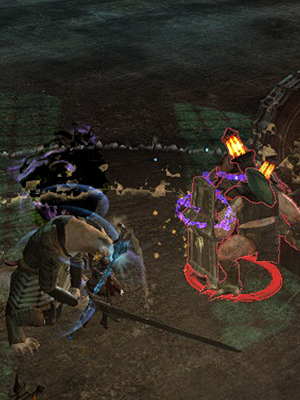 If ANet didn’t ditch the trinity, was GW2‘s combat that unique?
If ANet didn’t ditch the trinity, was GW2‘s combat that unique?
If we accept that Johanson did not in fact do the fastest u-turn ever with his livestream words and quick Reddit clarification, then what does that mean for GW2’s combat as a unique selling point? If the MMO merely iterated on the combat trinity rather than obliterating it altogether, then how different can its mechanics really be? Well, we know that games such as World of Warcraft had already introduced fluidity to the combat lineup. Taking WoW as an example while I’ve mentioned it, hybrid classes like the Druid, Monk, Paladin, and Death Knight could already switch between tank, healer, and DPS roles as required using each class’ specializations. RIFT lets players switch between roles by swapping which souls are active, and EVE Online ties particular roles to specific spaceships. If GW2’s development team simply wanted to call stopping players from being locked into a single role a unique selling point, then it had already been done.
The unique-to-themeparks element of GW2‘s combat, though, is that each player is essentially all three roles simultaneously, rather than able to switch between them only outside of combat. Dodging and crowd control act as a kind of distributed tanking mechanic by reducing incoming damage, and every class has a self-heal and other supportive abilities. Players are largely responsible for mitigating or healing their own damage, which really does undermine the usual spin on MMO combat’s holy trinity. I’d like to see the challenging content promised by Johanson that will force me to best utilise my freedom and make strategic choices that are more than just a throwaway glance at my off-cooldown abilities.
Over to you!
I do have an issue with ArenaNet’s newly invigorated emphasis on redefining the use of control, support, and damage: How will each profession remain balanced and adaptable when we start exploring the capabilities of the elite specializations and inevitably draw the conclusion that certain professions are much more adept at specific roles than others? If we find that any profession has an edge at either of the three roles, will those players be penned into that playstyle for the new challenging content that requires each role specifically? I guess I won’t be able to quell those concerns until I know more about the content that’s set to affect my combat playstyle. I’m sure, though, that flavour-of-the-month favourites will emerge and players will have to either adapt to their chosen profession’s favoured role or roll a new toon.
What do you think? Are you happy to see the apparent focus on specific combat roles? Do you think it might make content more technical and challenging, or will it only serve to hem players in? As ever, tell me your thoughts below.
 Tina Lauro has been playing Guild Wars 2 since it launched and now pens the long-running Flameseeker Chronicles column, which runs every other Wednesday and covers everything from GW2 guides and news to opinion pieces and dev diary breakdowns. If there’s a GW2 topic you’d love to see covered, drop a comment Tina’s way or mail her at tina@massivelyop.com.
Tina Lauro has been playing Guild Wars 2 since it launched and now pens the long-running Flameseeker Chronicles column, which runs every other Wednesday and covers everything from GW2 guides and news to opinion pieces and dev diary breakdowns. If there’s a GW2 topic you’d love to see covered, drop a comment Tina’s way or mail her at tina@massivelyop.com.
